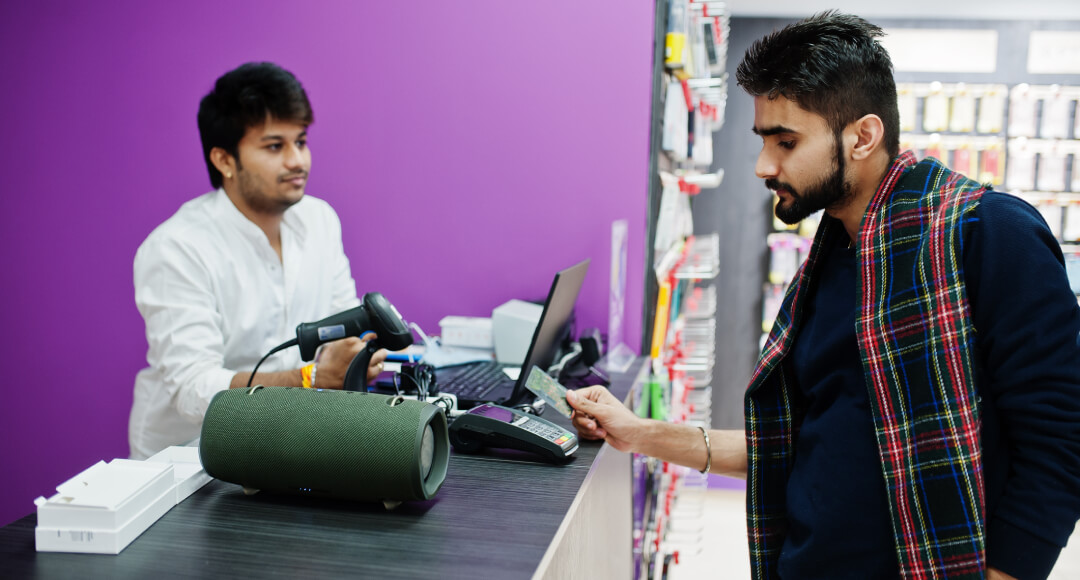The last two years have been revolutionary for the digital payment industry in India. Since the introduction of a cashless ecosystem, there have been numerous reforms that showcase expansive digital development. In fact, according to statistics, digital payments reached 1,162 crore transactions between April and November and is expected to surpass 1,800 crores in the current fiscal year. With such mind-boggling numbers, it is indeed important to keep up with the latest trends in the digital payment industry to stay ahead of the curve.
Increased Usage of POS Machines
After demonetization, Indian banks are looking to focus on expanding the use of POS machines rather than ATMs. This is in a large part due to the government’s push for a new digital cash revolution to replace traditional cash payments. By August 2017, the RBI found a 95% increase in the usage of POS machines as compared to the previous year. To put it in comparison, ATMs grew by only 2.2% in the same period. This positive trend is likely to continue in 2018. POS machines are also gaining popularity because banks see them as more cost-effective. Unlike ATM machines which require a lot of investment, POS machines are cheap and can be distributed easily.
AI will make digital payments more sophisticated
Artificial Intelligence is revolutionizing all aspects of our life but is proving to be particularly transformative in the field of digital payments. AI uses an accumulated data reservoir to recognize behavioural patterns and then act in an appropriate way based on this. Adoption of AI in Fintech will increase convenience for customers, along with providing customized suggestions, service and improving security. In India, 2018 is likely to see a rise in the adoption of AI technology in digital payments. India already has a massive database of customer-information to serve as the foundation for machine learning. However, in order to harness the full potential of AI technology, the country also needs to expertly analyse this data and utilise it effectively.
Ultra-Fast Payments will be on the rise
One of the biggest payment trends of 2018 will be the increase in adoption of non-cash payment methods. Due to massive improvements in technology, more people are going to conduct digital transactions than ever before. By 2020, around 720 billion transactions are projected to occur through the use of digital payment methods. Interestingly, the Indian market will be one of the biggest areas of growth in this field. Research has pointed to digital payments accounting for $500 billion by the year 2020, comprising almost 15% of the country’s total GDP. This development is, in a large part, due to the proliferation of smartphones in India. Initiatives such as the development of UPI technology will lead the way forward for mobile payments in India. However, the adoption of digital payments in India might still be marked by an economic divide, with much of this growth happening only within higher income groups. This is why, it’s important that steps are taken to enable payments in Tier III and Tier IV cities.
Contactless and wearable payments will gain acceptance
Wearable technology is the next exciting arena for innovation and is fast gaining popularity across the world. According to one study, 500 million wearable devices will be sold by 2021, with an estimated 20% of these devices equipped with payment technology. Most wearable payment devices come with NFC technology which guarantees a quick, secure, form of payment. Wearables like keychains, phone cases and watches were introduced in 2017, but are set to enter the mainstream market in 2018. Brands are also introducing fitness trackers with an NFC chip embedded in them. These wearables can make paying for your groceries as simple as tapping your wrist.
Digital wallet usage to grow
The usage of digital wallets will soon overtake credit cards as the preferred mode of online payments. One study found that digital wallets could account for as much as 46% of all transactions across the world. The growing adoption of mobile wallets can be attributed to an increase in cyber-security technology. Since every aspect of digital wallet payments is encrypted, along with high-security features involving PINs and fingerprints required for transactions, these are much safer than traditional wallets. With many businesses offering digital wallets as a payment option (often with special incentives for choosing them), consumers are more likely to get on board with them in 2018. In India especially, the use of digital payments is growing after demonetization forced the country to go cashless.
Companies will invest money and time to combat cyber attacks
No technology is 100% risk-free and this holds true for digital payments as well. However, the only way to attract more consumers towards using digital payments is by improving security in digital payments. In one survey, 88% of all respondents said they were willing to switch to digital payments, but their concerns about security acted as the main obstacle preventing them from doing so. Companies are spending millions on research to improve their software and tackle threats such as viruses, malware and identity theft. By identifying vulnerabilities and closing these security loopholes, companies can prevent breaches and build customer confidence. Digital payment merchants are also investing in risk-management strategies such as predictive data to help identify when a fraudulent transaction is taking place.
These emerging trends in digital payments will completely change the way we conduct everyday transactions. With improvements in technology and innovations in payment methods, digital payments are only going to make life more convenient for each one of us. With our mPOS machines by Bijlipay, we take this digital payment revolution even further with our combination of cutting-edge technology and breach-proof security.
You must be logged in to post a comment.



Leave a Comment